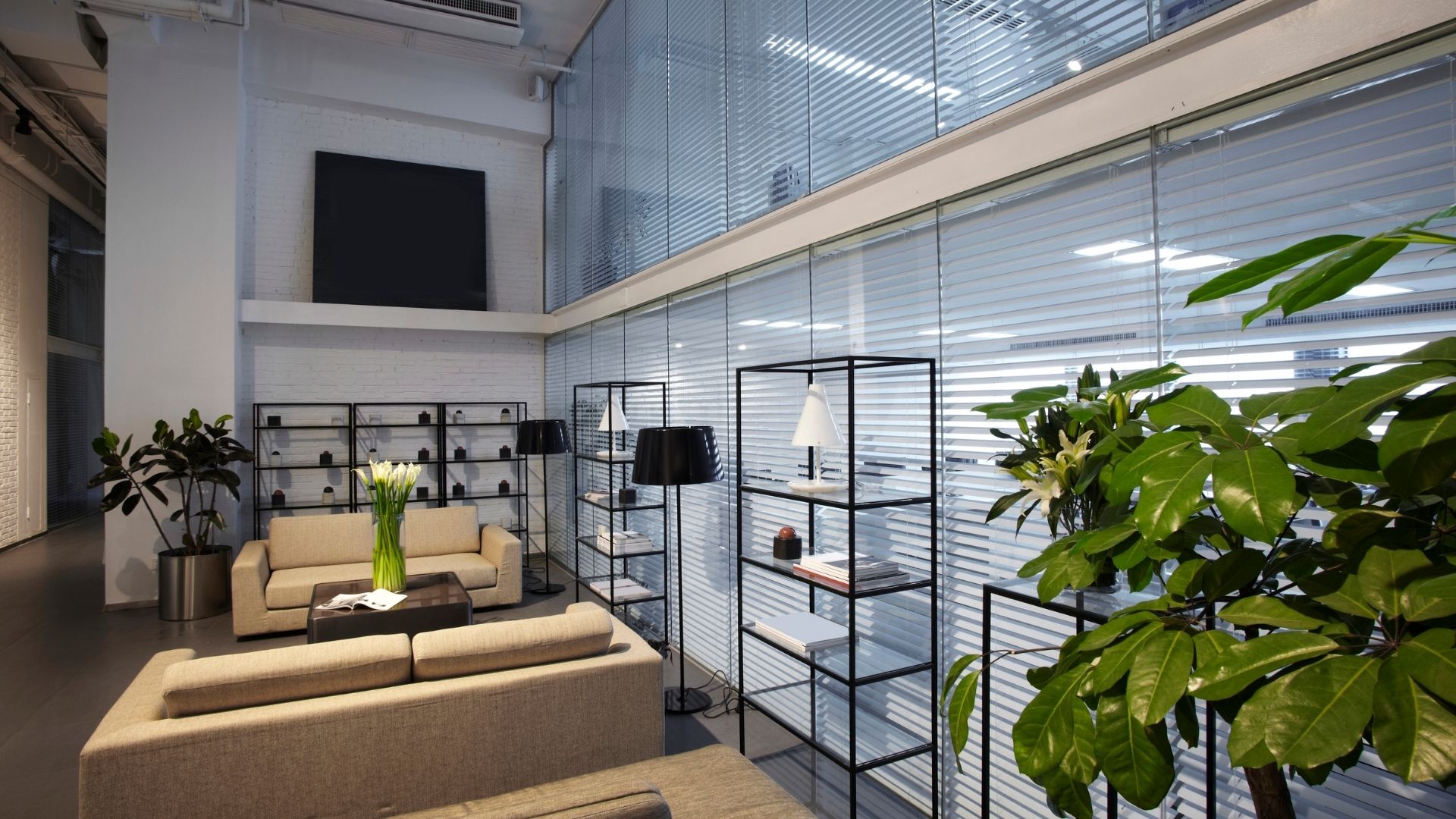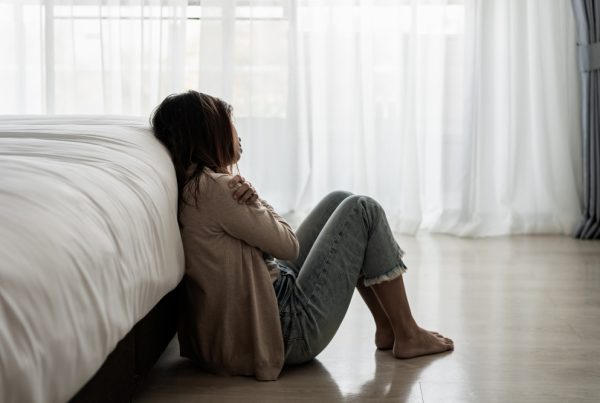It�s thought that a year of coronavirus lockdowns has cost the economy �251billion through closed businesses and reduced footfall. So, it�s no wonder that the Government and private businesses alike are keen to get Brits back in the office.
As a society we are getting used to one-way systems, handwashing and working from home, but when the Government makes its announcement and companies make the big return to work, what are some of the changes we can expect to see?
Here is the view of four different experts on the physical and cultural trends they predict within businesses when offices begin to open up once more.
These include:
1. Focus on air quality
2. No touch technology to influence behaviour
3. Layout changes
4. Quiet zones
5. The return of the traditional tea break
6. The end of the �department�
7. Screening as standard
8. Homely design with added protection
9. Automating the reception
10. No more meetings for meetings sake
Read the full story at: https://airdri.com/10-changes-businesses-could-make-to-pandemic-proof-workplaces/

1. Focus on Air Quality
Before Covid, most of us had probably not thought about the way viruses, such as the common cold are transmitted. Cramped into a small, stuffy meeting rooms or even larger open plan spaces with lots of �bodies�, infectious airborne particles can quickly multiply and create a hot bed for cross-contamination.
But even before coronavirus there were dangers in the air we breathe while at work. The World Health Organisation attributes 3.8 million premature deaths a year to indoor air pollution. Conservative estimates put the UK death toll at around 9,000 a year, with Allergy UK stating that the air quality indoors can be up to 10 times worse than outside.
During the pandemic, the Government has set out new guidelines for ventilation and maximising fresh air in the workplace, which includes open windows as well as the use of air cleaning and sterilisation units.
Where opening windows to allow fresh air to circulate is not practical or comfortable for workers, it is thought that these types of technology will be employed as an affordable way to minimise the risk of disease transmission.
Steve Whittall, from Airdri, a leading manufacturer of air sanitisation units said: �In our first quarter for 2021 we�ve seen a huge increase in enquiries from office managers and larger firms that are preparing for a return to work. Companies want a solution that provides as little disruption to employees as possible; yet minimises the risk of virus transmission through stagnant/unventilated air & surfaces.
�An air sanitiser such as the SteraSpace range from Airdri, combines three technologies to emit a stream of disinfecting plasma into the air which effectively removes viruses, bacteria, mould, fungi, and odours to give extra peace of mind. Not only this but once installed, sanitisers work continuously in the background to eliminate harmful pathogens in the air and on surfaces.
�They are quiet and compact yet suitable to cover large open spaces, as well as smaller spaces such as meeting rooms or communal break areas that will undoubtedly see a higher volume of staff congregating.�
Tim Crabtree, director at Mint Office adds that additional plants and greenery will also be used in a bid to improve air quality:
�Plants are important to offices as they help improve both air quality as well as ambiance. There are some plants which are brilliant for helping clean the air of impurities, but they add to the aesthetic too, making the office environment a more appealing place to be in. This is going to be very important to help workers to adjust back into office life and leave their home comforts behind.�
There will also be a need for companies to consider hybrid working, including the part time use of coworking spaces which offer vibrant opportunities for proactive productive energised halfway house when it�s difficult to work at home.
2. No touch technology to influence behaviour.
Whether it�s automated motion censored lights, which incidentally are good for the environment too, doors that open by themselves, or more simple inventions that limit the amount of people touching switches, handles and keypads; businesses will be looking for new ways to reduce the times people use high traffic touchpoints in the office.
Adam Bennett from access control and ID card specialists Digital ID (http://digitalid.co.uk), believes technology could also be used to influence behaviour. ID cards can be programmed to only allow access to certain areas and routes throughout a building, rather than relying on individuals to follow the rules.
He said: �access control systems are infinitely customisable, if you want your employees to have one way access that�s more than easy to achieve by programming the system so that doors can only be opened in certain ways or to specific patterns and timings.�
The company has also recently seen record sales of its innovative anti-bacterial KROK ID card holders that negate the need to use door handles, he said:
�People with a virus in their noses and throats may leave infected droplets on objects and surfaces (called fomites) when they sneeze, cough on, or touch surfaces, such as tables, doorknobs and handrails. Other people may become infected by touching these objects or surfaces, then touching their eyes, noses, or mouths before cleaning their hands. So, many of the adaptations we will see to offices will be to do with reducing common touchpoints.”
�Companies are looking for simple, cost effective solutions to stopping the spread of viruses through touch, so something as simple as an ID card holder that means they don�t have to touch doors and keypads with their hands is a no-brainer. We�ve been inundated with requests.�
3. Layout Changes
Layout to reduce cross infection could change in a number of ways according to experts.
Smaller, closed plan spaces
Matt Thickett of Oscar Compliance Solutions, a company that assesses workplace compliance to Covid-regulations said:
�The open plan office came into existence as a way of stimulating ideas and creativity through ease of interaction, but studies have shown that open plan spaces are also linked to low productivity, stress and high blood pressure. Now, as companies strive to make workplaces as Covid-safe as possible � they also pose a health threat.
�The problem with open plan and infection is that it gives many more opportunities for more people to cross-infect one another.
�An uncovered cough or sneeze creates a spray of up to 40,000 disease-ridden droplets that travel at up to 200 mph to up to 26 feet and stay suspended in the air for up to 10 minutes.
�Smaller offices that house fewer people could certainly return, as well as rotation patterns. For example, a rota system with one week in the office, one week work from home could be introduced to allow businesses to function even if one or more team members become sick.�
A return to 1970s cubicles
Matt continued: �During the pandemic, partitions have been introduced, made of Perspex screens which we�ll probably see well after the vaccination roll out. We usually advise that desks are rearranged so that workers are back-to-back rather than facing on another but segregating workers through partitions is another solution.�
Tim Crabree at office interior design firm Mint Office, added:
�A return to more individual workspaces or �pod� [booths] working with greater space between work areas could not just prevent infection but also give workers the privacy and concentration space they need but may not have enjoyed in the pre Covid-19 layouts or at home.
We have had significantly more interest in pods and breakout areas, or modular office designs that can be adapted to the changing needs of the work force. Companies will need to use clever interior design to make spaces feel homely, stimulating and productive thus avoiding the attitudes to cubicles from the 1970.�
4. Quiet Zones
Tim Crabree at Mint Offices believes companies will also need to consider the ambient noise levels in offices now employees are more used to working from home.
�Home-working has given people the space to �zone out� and get away from the chatter and noise so that they can really focus on the task in hand.
�The trend for �break out� areas were already gaining traction, but we have seen a huge increase in companies installing a �quiet zone� or soft seating areas, pre-pandemic and this is likely to continue as workers who are used to the home comforts and total silence when needed.
�Booths are another option as a means of offering smaller, private and less distracting work-spaces.�
5. The return of the traditional tea break
Managing when employees take breaks could be another change that both employers and employees need to get used to.
Matt at Oscar Compliance Solutions said:
�It�s about limiting gatherings and mixing as much as possible. So, for instance, the mass exodus for a cigarette break or a chat by the water cooler could and should become a thing of the past.
�Congregating in the kitchen could be another potential route to cross-infection, so some of the businesses we�re working with have even floated the idea of bringing back the tea trolley in some shape or form. Serving up hot beverages direct to desks. It would certainly meet the criteria for keeping a workplace Covid-safe, how it may go down with employees is another matter.�
6. The end of the �department�
A cultural change that we could see is changing how employees group their teams together. Some experts believe that when we return to office spaces, entire departments will not be permitted to sit together as they would have pre-covid. Rather, larger companies may organise their teams into huddles with representatives from different teams across the organisation.
The thinking behind this is that if a close contact becomes ill and passes on an infection, the entire department will not be taken out and the company can continue to operate.
7. Screening as standard
Access control and ID card specialists Digital ID believe that screening in terms of health-related questions and physically in terms of temperature on entry to a building will become commonplace.
Adam Bennett at Digital ID said: �New procedures and vetting processes will be needed to mitigate the risk of bringing illness into the workplace. There is scope for temperature screening booths and rapid flow testing areas being installed onto sites to ensure those who could pass on an infection do not gain entry.
�Vaccination status could be checked on entry too � the software is readily available for a �digital vaccine passport� and would be very easy to use � it could be as easy as scanning an ID card.
�Visitor management technology has come a long way in recent years, with software now having the ability to �vet� people before they are granted access. Our visitor management software allows you to incorporate health related questions, site safety information and even instructional videos to the sign in process.�
8. Homely Design with Added Protection
This year, thoughtful interior design will really come into its own to help employees settle back into communal working.
Tim at Mint Offices said:
�It�s unlikely that workers will be able to personalise their work-space with photographs and knick-knacks as they may have done previously due to contamination risks and many will also be used to their home comforts, so there will be a need to create comfortable and welcoming spaces.
�Offices will be more spaced out with concentration not just on desks and chairs but break out areas too. Looking at colour and texture is becoming much more important to create a pleasant more homely working environment. Gone are magnolia walls and neutral floor coverings.
�Many companies may give workers more choice over the colour of their desks and more importantly proper supportive seating, stationery and desk accessories like laptop risers etc. will also help in a bid to help them create a comfortable and welcoming space.
�There are surfaces and fabrics coming on stream which are anti-bacterial, both of which will self-clean and stand up to more abrasive cleaning and substances which will help eliminate bacteria and viruses.�
9. Automating the Reception
Adam Bennett from Digital ID said:
�There is a definite rise in automated check-in kiosks to replace the front desk. Using dedicated software employees can also check-in to a flight, book a taxi or order a pizza for a meeting themselves using their smartphone effectively negating the need for admin support. Rather than waiting areas with newspapers and magazines, businesses will use tech solutions like visitor management systems.�
10. No more meetings for meetings sake
The days of back-to-back meetings crammed into a tiny board room are gone. Some thought-leaders have even gone as far as to suggest that senior management will have to approve meetings in advance to ensure they really are vital to the running of the company. In terms of layout does this mean the end of the meeting room?
Steve Whitall from Airdri said:
�Companies have really switched onto the time-saving and expense-saving reality of online meetings.
�Meetings are still going to be important, so I can�t see companies doing away with board rooms and meeting rooms entirely, but the rooms will be repurposed to include better video conferencing so that teams can get together easily virtually. Air and surface sanitising technology could be employed to stop meeting rooms becoming �fragrant� or full of germs without the need for cleaning in between meetings.�




